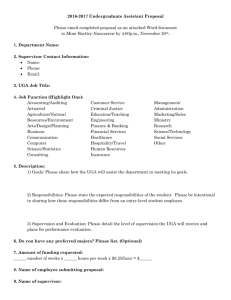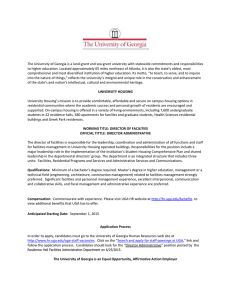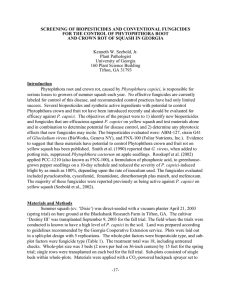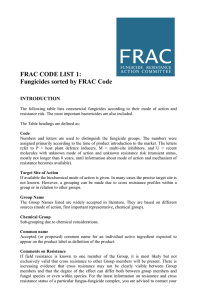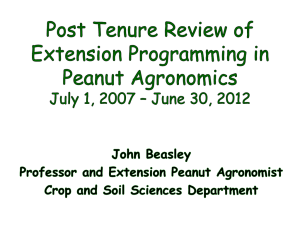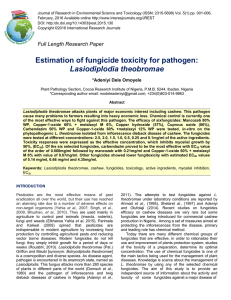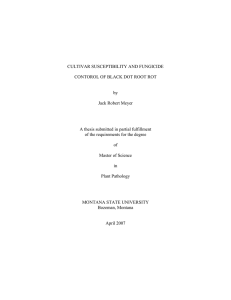The Role of University/USDA Research in Developing Disease Management Programs
advertisement
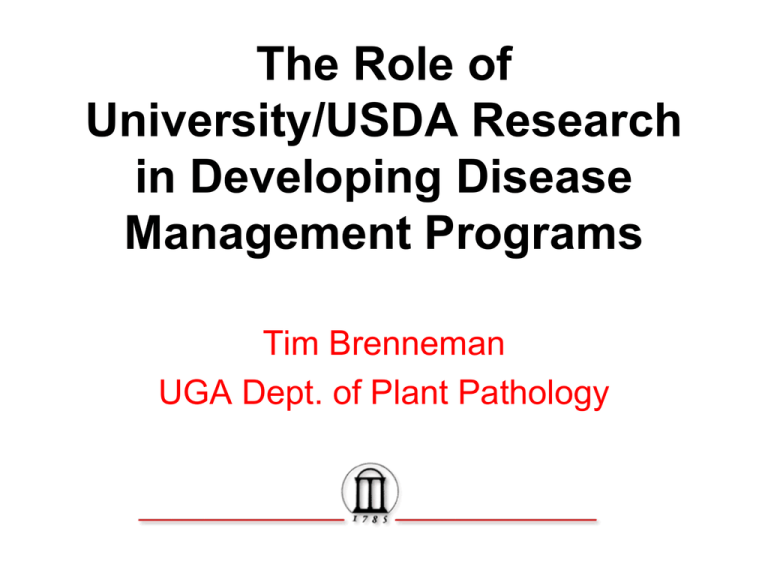
The Role of University/USDA Research in Developing Disease Management Programs Tim Brenneman UGA Dept. of Plant Pathology Why does UGA even care about peanuts? We are mandated to care about peanuts Morrill Act of 1862; Land-grant Colleges founded to teach “agriculture and mechanical arts” Hatch Act of 1887; Established State Experiment Stations to “conduct original research . . . bearing directly upon the agricultural industry” Smith-Lever Act of 1914; Established the Cooperative Extension Service for farmer training, adult education, etc. CSREES (1994) and NIFA (2009) Have you ever seen a Cadillac? This is a Cadillac! Industry Research County-based Extension Teaching Fungicides – an essential input in the humid SE USA Fungicides aren’t formulated for the challenges of peanut diseases! • • • • • Leaf spot Limb rot White mold Pod Rot CBR Fungicides must get down to the lower stems, pegs, etc. for white mold control Underground phase occurs with drier conditions and presents a difficult target for fungicides. Irrigation timing for control of soilborne and foliar diseases Peanut Leaves Folded at Night Night Spraying – Spraying Gives Night results with serious white mold Night vs. day sprays of the same fungicide Azoxystrobin Azoxystrobin night spray daylight spray Both plots received Abound (18.3 fl oz/A) applied at 60 and 90 DAP with the same equipment (20 GPA) UGA strives to find the best uses of commercial products - Partner with industry - Thousands of small plots for efficacy evaluations of experimental and labeled products (bringing the best tools to Georgia growers) - What is the best way for our growers to use these products? - Source of non-biased data “What does Tifton say about it?” Proposed New College of Ag Slogan "At UGA, we don't make a lot of the products you buy. We make a lot of the products you buy (work) better." (Apologies to BASF!) Many Aspects of University Research in Plant Pathology • Fungicide utilization, resistance management, etc • Identifying mechanisms and screening for disease resistance • Disease forecasting and modeling • Effects of cultural practices on disease • Basic biology and epidemiology • Meeting new challenges (ex. TSWV) Nearly the End of an Industry! Losses to Tomato Spotted Wilt in Peanut in Georgia 1990-2011 0.25% Jim Todd, Steve “Bug” Brown, John Baldwin, Scott Tubbs, Nathan Smith, Amanda Smith, John Beasley, Simmy McKeown, Dan Gorbet, Bill Branch, Austin Hagan, Corley Holbrook, Kim Moore, Peggy Ozias-Akins, Ron Weeks, Carroll Johnson, Sheran Thompson, Lenny Wells, Tim Brenneman, Audrey Luke Morgan, Roger Meadows, Mike Deom, Hanu Pappu, Mike Heath, Boyd Padgett, Stanley Fletcher, Bob Kemerait, Steve Mullis, Eric Prostko, Greg McDonald, Diane Rowland, Billy Mills, Babu Srinivasan, Fred Shokes, John Paulk, John Sherwood, June White, Jim Demski, Alex Csinos, Russell Nuti, Bikash Mandal, Barry Tillman, Natalia Martinez, Roy Pittman, Claudia Nischwitz, Joel Paz, Rabiu Olatinwo, Gerrit Hoogenboom, Wilson Faircloth, Roy Pitman, et al, et al, et al….. S.W.E.A.T. “Spotted Wilt Eradication Action Team” The 10 Commandments have been re-written! • • • • • • • Weed control Tillage Row spacing Planting Dates Insect management Seeding rates Cultivars & breeding programs “These are your cultivars 20??” (conventional and molecular methods – GMO’s?) Nematode Resistance – near immunity and a marker to track it! With current prices, have we done too good a job? In light of world population, energy issues, water availability, land use issues, emerging pest resistance problems, etc., the real problems still lie ahead. We will need every available technology we can think of to meet the needs of our rapidly growing world! Improved Production Efficiency Keeps Peanuts Profitable

